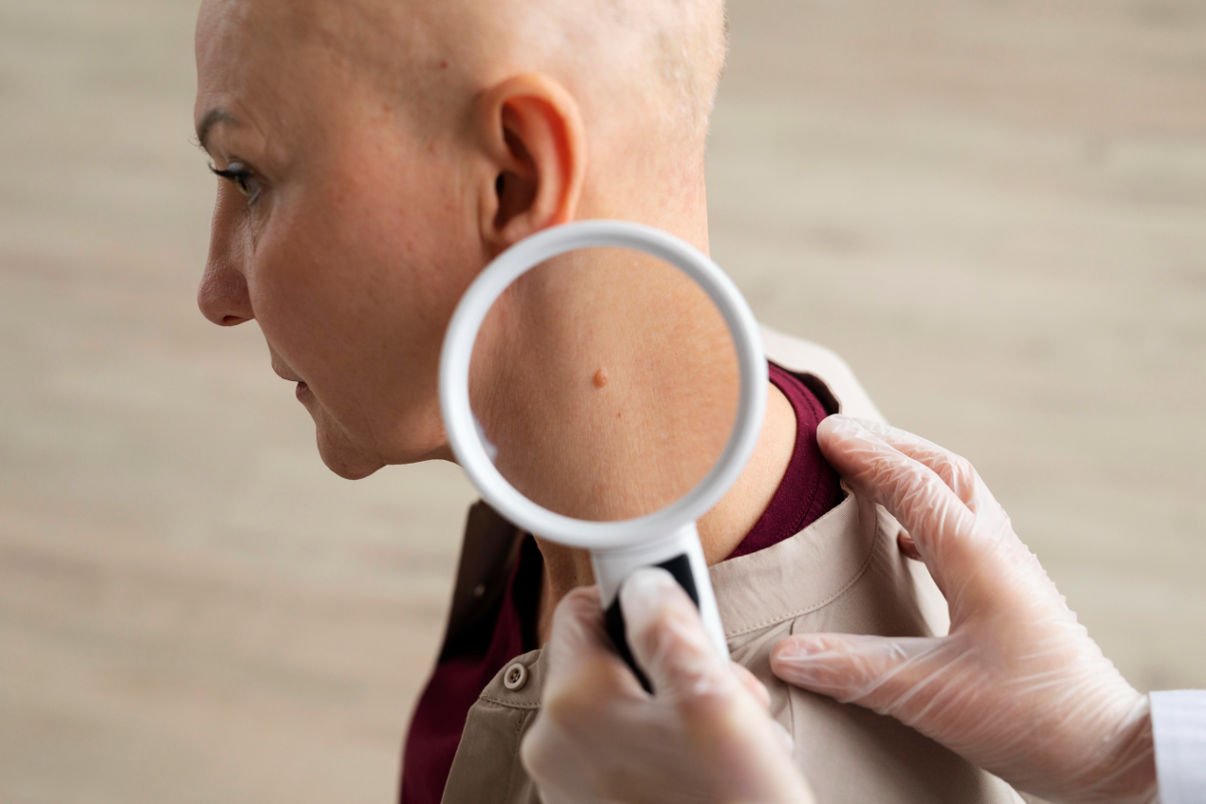8 Skin Tumours: The Ultimate Guide to Types, Symptoms, and Treatments

Skin tumours are abnormal growths on the skin that can vary widely in appearance and significance. From benign moles to potentially malignant lesions, understanding the various types of skin tumours is essential for early detection and effective management. This comprehensive guide explores the most common types of skin tumours, their causes, symptoms, and available treatment options, equipping you with the knowledge to make informed decisions about skin health.
What Are Skin Tumours?
Skin tumours refer to abnormal growths that develop on the skin. They can range from harmless benign conditions to serious malignant cancers. While some skin tumours are asymptomatic and require no treatment, others can cause discomfort, affect appearance, or pose health risks. Early diagnosis and treatment are crucial for managing skin tumours effectively and preventing complications.

Common Types of Skin Tumours
Here are some of the most common types of skin tumours:
- Basal Cell Carcinoma (BCC): Basal cell carcinoma is the most prevalent form of skin cancer, originating from basal cells in the skin’s outer layer. It typically presents as a small, pearly bump or a scaly patch. BCCs generally grow slowly and are unlikely to metastasize to other body parts.However, if left untreated, they can cause local tissue damage. Treatment typically involves surgical removal or topical therapies.
- Squamous Cell Carcinoma (SCC): Squamous cell carcinoma originates from the squamous cells in the skin’s outer layer and often appears as a red, scaly patch or a sore that doesn’t heal. SCCs can be more aggressive than BCCs and may spread to other areas if not treated promptly. Treatment options include surgical excision, cryotherapy, and topical chemotherapy.
- Melanoma: Melanoma is a form of skin cancer that originates from melanocytes, the cells responsible for producing skin pigment. It often appears as an unusual mole or a change in an existing mole’s appearance. Melanoma can be highly aggressive and may spread to other organs if not caught early. Treatment usually involves surgical removal, and additional therapies may be required based on the stage and spread of the cancer.
- Actinic Keratosis: Actinic keratosis is a precancerous condition that results from long-term sun exposure. It manifests as rough, scaly patches on areas of the skin exposed to the sun. Although actinic keratosis is not cancerous in itself, it can progress to squamous cell carcinoma if not addressed. Treatments may involve cryotherapy, topical creams, and laser therapy.
- Seborrheic Keratosis: Seborrheic keratosis is a benign skin tumour that typically appears as a non-cancerous, waxy, or scaly growth. These tumours are usually brown, black, or tan and can vary in size. They are generally harmless and do not require treatment unless they become irritated or unsightly. Removal is often done for cosmetic reasons or if the growth becomes bothersome.
- Nevi (Moles): Nevi, commonly known as moles, are benign growths of pigmented skin cells. They can be flat or raised and vary in color and size. Most moles are harmless, but changes in their appearance, such as asymmetry, irregular borders, or color changes, may indicate potential skin cancer. Regular monitoring and dermatological evaluation are recommended for any changes in moles.
- Dermatofibroma: Dermatofibromas are benign tumours that appear as firm, raised nodules on the skin. They are usually brownish in color and can be found on the arms, legs, or torso. Dermatofibromas are generally harmless and do not require treatment unless they cause discomfort or cosmetic concerns. Surgical removal is an option if needed.
- Kaposi’s Sarcoma: Kaposi’s sarcoma is a rare type of skin cancer that often presents as purple or brown patches on the skin. It is associated with immunocompromised individuals, such as those with HIV/AIDS. Treatment typically involves addressing the underlying condition, along with specific therapies like chemotherapy or radiation.
Causes and Risk Factors
The causes of skin tumours can vary depending on the type and individual risk factors:
- Sun Exposure: Prolonged and unprotected exposure to UV radiation from the sun is a major risk factor for developing various skin tumours, including basal cell carcinoma, squamous cell carcinoma, and actinic keratosis.
- Genetics: Family history and genetic predispositions can increase the risk of developing skin cancers like melanoma and basal cell carcinoma.
- Skin Type: Individuals with fair skin, light eyes, and a tendency to sunburn are at higher risk for skin tumours.
- Immune System: A weakened immune system, due to conditions like HIV/AIDS or immunosuppressive treatments, can increase the risk of skin tumours such as Kaposi’s sarcoma.
Symptoms of Skin Tumours
The symptoms associated with skin tumours can vary widely, depending on the type and location:
- Basal Cell Carcinoma: Pearly bumps, red patches, or sores that do not heal.
- Squamous Cell Carcinoma: Red, scaly patches, or sores that persist or bleed.
- Melanoma: Changes in existing moles or new, irregularly shaped or colored growths.
- Actinic Keratosis: Rough, scaly patches on sun-exposed areas.
- Seborrheic Keratosis: Waxy, scaly, or raised growths that may vary in color.
- Nevi: Moles that may change in size, shape, or color.
- Dermatofibroma: Firm, raised nodules on the skin.
- Kaposi’s Sarcoma: Purple or brown patches on the skin.
Diagnosis of Skin Tumours
Diagnosing skin tumours typically involves several steps:
- Physical Examination: A healthcare provider examines the skin to assess the appearance and characteristics of the tumour.
- Biopsy: A sample of the tumour is removed and examined under a microscope to determine whether it is benign or malignant.
- Imaging Tests: For certain types of skin cancers, imaging tests like CT scans or MRIs may be used to evaluate the extent of the disease.
Treatment Options for Skin Tumours
The treatment for skin tumours varies based on their type, size, and location.
- Surgical Removal: The most common treatment for many skin tumours, including basal cell carcinoma, squamous cell carcinoma, and some seborrheic keratoses, involves surgically excising the tumour.
- Cryotherapy: This method uses extreme cold to destroy abnormal skin cells and is often used for actinic keratosis and some benign tumours.
- Topical Treatments: Medications applied directly to the skin can be effective for treating superficial skin cancers and precancerous conditions.
- Radiation Therapy: This may be used for certain skin cancers that are difficult to remove surgically or for patients who cannot undergo surgery.
- Chemotherapy: For more advanced or aggressive skin cancers, chemotherapy may be used to target cancer cells throughout the body.
Prevention and Self-Care
Preventing skin tumours involves several proactive measures:
- Sun Protection: Apply sunscreen with a high SPF, wear protective clothing, and limit prolonged sun exposure.
- Regular Skin Checks: Perform self-examinations and schedule regular dermatological check-ups to monitor any changes in the skin.
- Healthy Lifestyle: Maintain a healthy diet and avoid smoking, which can reduce the risk of certain types of skin cancers.
Conclusion
Understanding skin tumours and their various types is crucial for effective management and treatment. From benign conditions like seborrheic keratosis and dermatofibromas to more serious concerns like melanoma and basal cell carcinoma, early detection and appropriate treatment are key to maintaining skin health. By staying informed and proactive about skin changes and risk factors, you can better manage and prevent skin tumours, ensuring a healthier future. If you notice any suspicious changes in your skin, consult a healthcare provider for evaluation and guidance.
If your symptoms are severe or don’t improve, don’t wait—schedule an appointment at Lux Hospital for expert care and treatment. We focus on your comfort and well-being first.




















